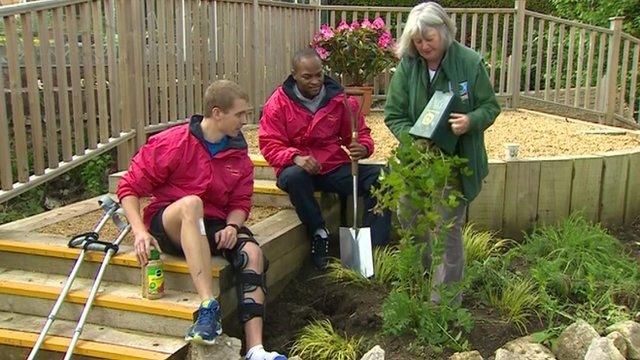Chelsea Flower Show gardens unveiled with WW1 theme
- Published
BBC Weather's Carol Kirkwood goes behind the scenes at the Chelsea Flower Show
Garden designers are making their final preparations for the opening of the Chelsea Flower Show, with some choosing to mark the centenary of World War One.
One garden represents a landscape from northern France, complete with trenches and a mine crater filled with water.
Other themes are the growth of community gardens and how horticulture can help unemployed people find work.
BBC gardener Alan Titchmarsh has co-designed a garden to celebrate 50 years of the Britain in Bloom campaign.
Asked if he had any last-minute changes to make to his and Kate Gould's display, called From the Moors to the Sea, he said: "No, no, no. We're all done - we finished just about end of Saturday and it's all settling now.
"And we've had a good nice quiet night and everything's sitting up. Very happy."
The garden includes a dry stone wall, which was dismantled from its original site in Yorkshire and reassembled in Chelsea.
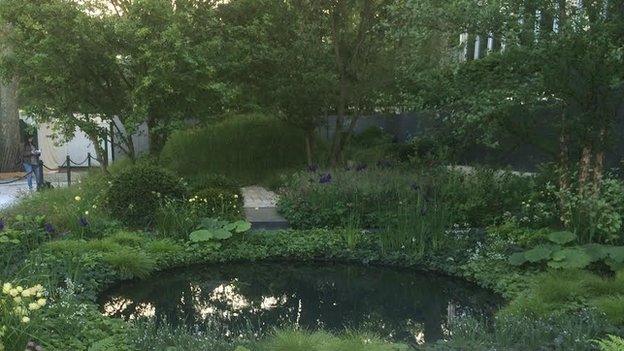
The pond in the No Man's Land garden commemorating WW1 represents a mine crater

A garden co-designed by Alan Titchmarsh celebrates 50 years of the Britain in Bloom campaign

Brightly coloured lupins were the focus of another display
The Queen will visit the show, at the Royal Hospital in Chelsea, London, later on Monday, ahead of its opening to the public on Tuesday.
One of those still working on his feature on Monday morning was Chelsea first-timer, Hugo Bugg, 27.
He has designed a Waterscape Garden, subtitled Embrace the Rain. It is intended to illustrate global water issues and demonstrate practical solutions for home gardeners and commercial landscapes.
The No Man's Land garden, designed by Charlotte Rowe, was inspired by images of World War One.
She has focused on the landscape of the Western Front in France and put together a modern representation of the area, showing how the natural environment has regenerated.
Churned up
"My grandfather, who I was very close to, went over the top aged 19 on the first day of the Battle of the Somme," she said.
"The idea behind it is that the land, No Man's Land, was fought over again and again with the front line moving very little, and the land got completely messed up and churned up.
"The concept is the healing of the land after severe conflict, and relating it to the human body and spirit."
Plants in the garden were grown by injured soldiers during a programme of horticultural therapy.
Another exhibit celebrating Britain in Bloom is a garden made from recycled or donated materials, which was designed by renowned gardener Jon Wheatley and put together by unpaid volunteers.
Grow your own
A display called Reachout suggests that horticulture can improve the lives of young people struggling with drug addiction or unemployment, by providing them with work and inspiration.
The "Techno Allotment" by Leeds District Allotment Gardeners Federation highlights how communities can grow their own food cheaply and stylishly.
The show's organisers are also raising funds through their charitable arm to create more jobs over the next five years at Royal Horticultural Society (RHS) gardens in Wisley, Surrey; Harlow Carr, North Yorkshire; Hyde Hall, Essex; and Rosemoor in Devon.
RHS director general, Sue Biggs, said: "Horticulture is a vibrant, challenging and diverse industry with great job prospects. Career paths include botanist, nursery staff, designer, florist, horticulturist, plant collector, landscape architect, entrepreneur, journalist, TV presenter and many more.
"We also know that more than 80% of secondary school teachers who discussed careers with their pupils said that they themselves were not aware of the vast opportunities offered by a career in horticulture."
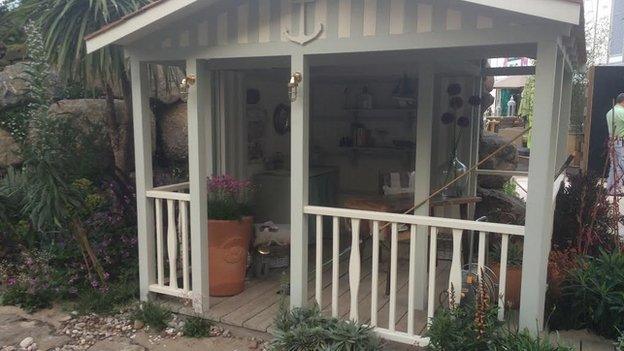
The Titchmarsh garden included a beach hut, designed with a scene in mind from the Isle of Wight, where Alan lives.
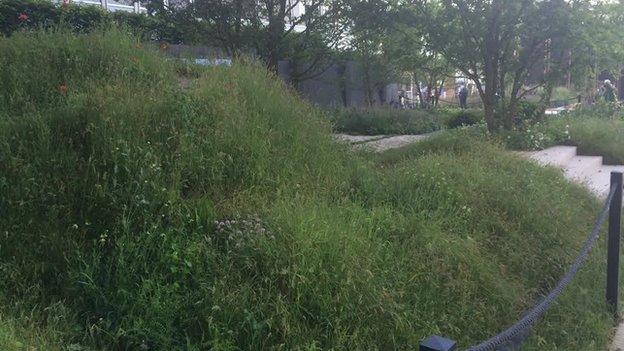
Another feature in the No Man's Land garden was intended to highlight the regeneration of the landscape of the Western Front
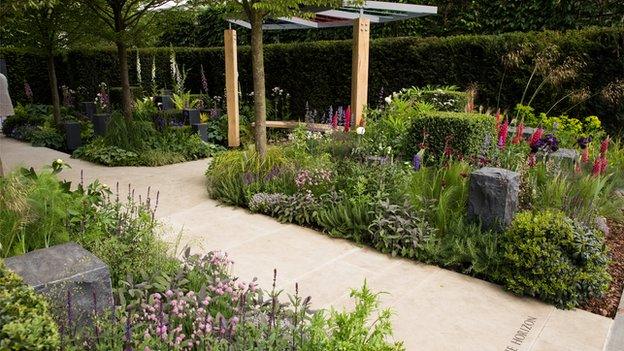
The Hope on the Horizon display symbolises the recovery process for injured service personnel
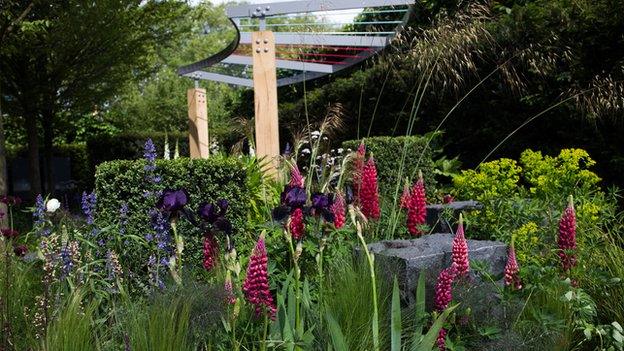
The designer, Matt Keightley, said Hope on the Horizon embodied the Help for Heroes ethos of Inspire, Enable, Support
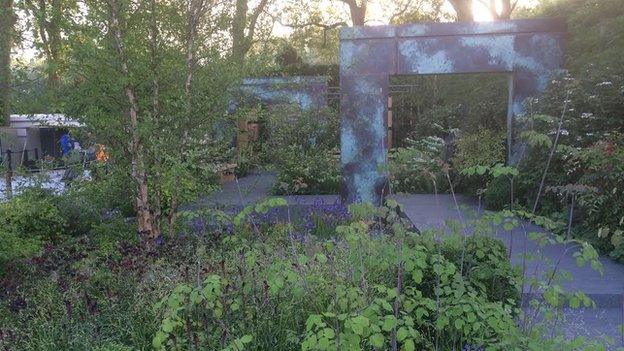
The Brewin Dolphin garden was "symbolic of emerging opportunities".
- Published16 May 2014

- Published13 May 2014
